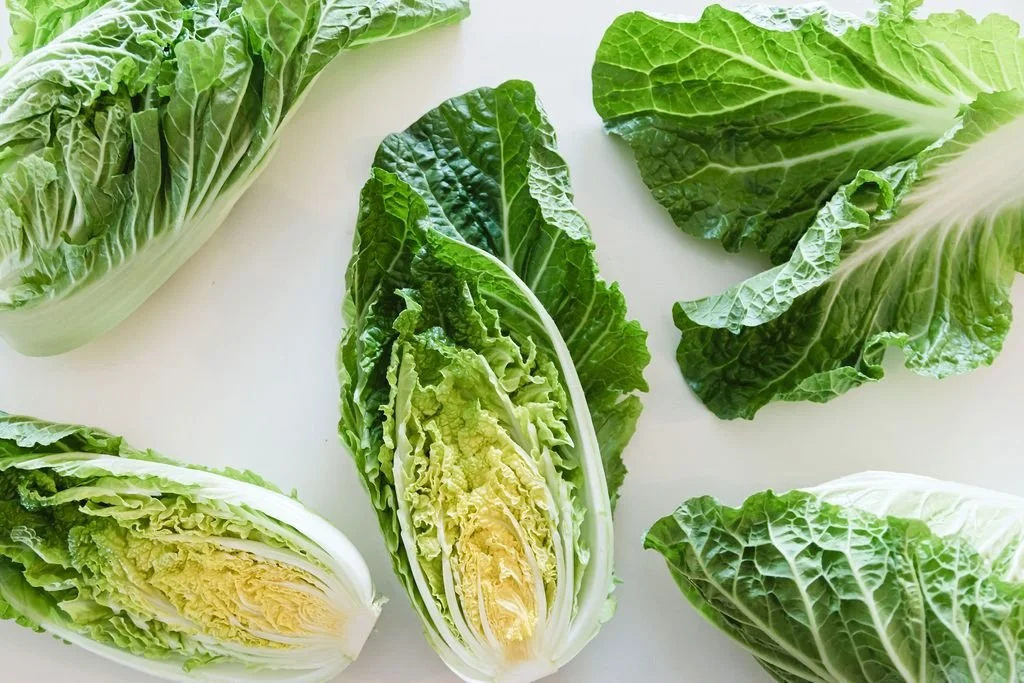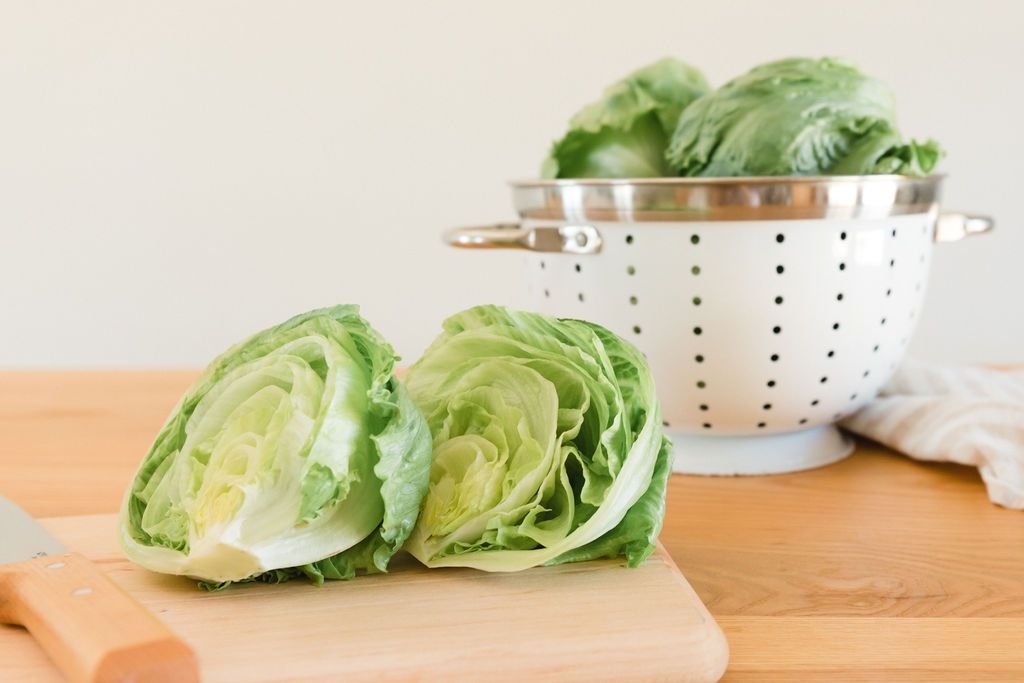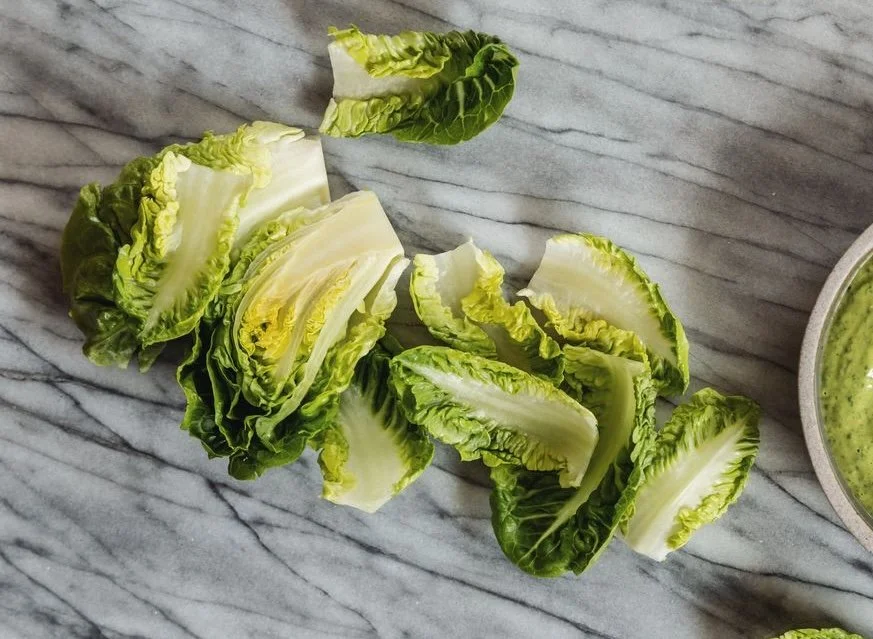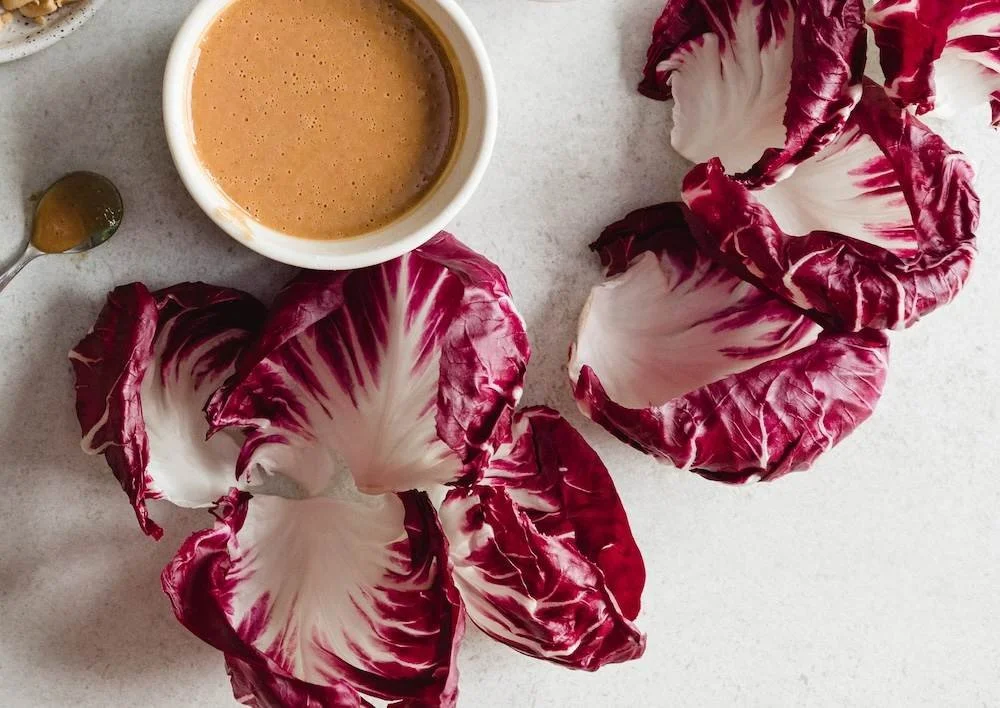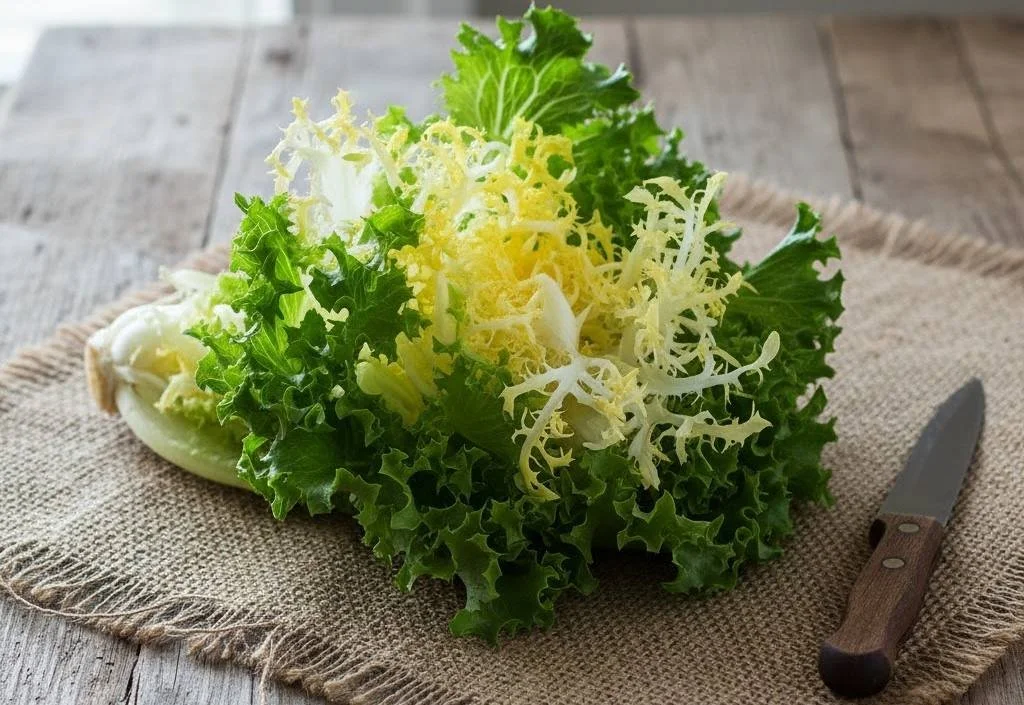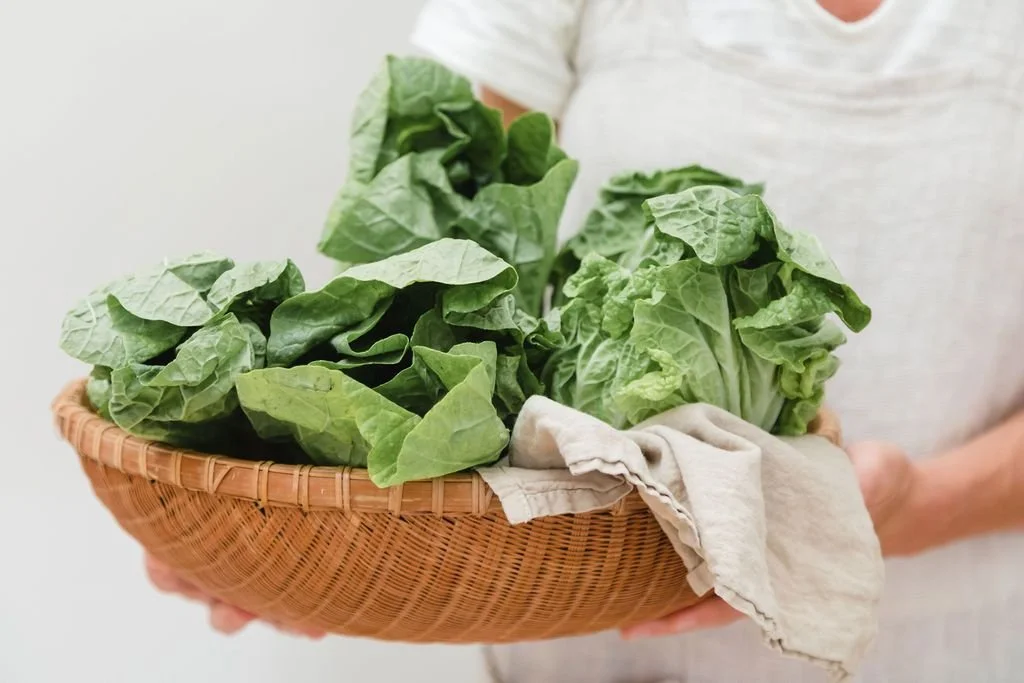Lettuce is an unsung hero in the world of healthy cooking, with each variety having its own unique qualities that suit different recipes and styles of cooking.
At Hitchcock Farms, we're proud to grow several varieties of premium lettuce that help keep your kitchens stocked.
In this blog, we're sharing some of our favorite types of lettuce and how you can incorporate them into your recipes.
Lettuce Varieties to Add to Your Menu
| Lettuce Type | Varieties | Leaf Structure | Texture | Flavor | Season | Best For |
|---|---|---|---|---|---|---|
Crisphead Lettuce |
Iceberg, Baby Iceberg |
Tightly packed leaves forming round heads |
Dense, crunchy, and juicy |
Mild, watery, and slightly sweet |
Year-round; peak late spring–early fall |
Wedge salad, coleslaw, tacos, sandwiches, burgers, lettuce cups |
Romaine Lettuce |
Romaine, Romaine Hearts |
Firm rib with upright, elongated leaves |
Tender leaves and crisp hearts |
Mild, sweet, and slightly earthy |
Year-round; peak spring and fall |
Caesar salad, sandwiches, wraps, lettuce cups, grilling |
Butterhead Lettuce |
Boston, Bibb |
Rounded heads with loose and soft leaves |
Soft, velvety, and tender |
Slightly sweet and floral |
Spring and fall |
Delicate salads, garnishes, lettuce wraps |
Looseleaf Lettuce |
Green Leaf, Red Leaf |
Loose and frilly leaves |
Tender with a slight crunch |
Mild and nutty |
Spring and fall |
Mixed salads, sandwiches |
Asian Greens |
Napa Cabbage, Bok Choy |
Elongated heads or stalks |
Crunchy stems with tender leaves |
Earthy and slightly sweet |
Year-round; peaks fall and winter |
Stir-fries, soups, slaws, grilling |
Specialty & Heirloom Varieties |
Little Gem, Radicchio, Frisée |
Varies — compact or frilly leaves |
Ranges from crisp to tender |
Ranges from sweet to bitter |
Some year-round; mostly cool-season |
Mixed greens, warm salads, casseroles |
Crisphead Lettuce
1. Iceberg
Iceberg lettuce was developed in 1894 and was named both for its icy color and crunch and its method of transportation.
Shippers covered the lettuce in crushed ice, and it became the first type of lettuce to be transported across the United States.
Nutrition: A cup of chopped or shredded iceberg has 0.5 g of protein, 0.66 g of fiber, 10 mg of calcium, and 77 mg of potassium.
Best For: Iceberg's crispy texture makes a great topping on tacos, sandwiches, and burgers. It's also good for wedge salads and coleslaw.
Recipe Inspiration: Use traditional or baby iceberg lettuce to prepare this steakhouse wedge salad, topped with savory bacon, crunchy radishes, and tart dried cranberries.
2. Baby Iceberg
A smaller, sweeter version of the classic favorite, Iceberg Babies™, was developed by Hitchcock Farms in 2002 and introduced to the foodservice industry in 2005.
Nutrition: Baby iceberg's nutritional profile is very similar to traditional iceberg. It's low in calories and a good source of potassium, calcium, and vitamin A.
Best For: Baby iceberg is the perfect size and shape for wedge salads, stacked salads, and lettuce cups or wraps.
Recipe Inspiration: Serve this delicious Thai pork recipe with Iceberg Babies™ on the side so that diners can construct their own lettuce cups.
Romaine Lettuce
3. Romaine
Romaine is one of the most popular varieties of lettuce thanks to its mild flavor and crisp texture.
Thousands of years ago, it grew as a weed in the Mediterranean region, but today, it's enjoyed all over the world.
Nutrition: Romaine is rich in calcium, phosphorus, magnesium, and potassium. It also contains vitamin C, vitamin K, folate, and beta carotene.
Best For: Romaine makes an excellent base for a classic Caesar salad, and it's a good addition to sandwiches and wraps.
Recipe Inspiration: Top sliced romaine lettuce with chopped apples, walnuts, and chives, and drizzle with a blue cheese dressing to make this fresh and flavorful salad.
4. Romaine Hearts
In 1994, Hitchcock Farms was the first to introduce romaine hearts to the foodservice industry.
Romaine hearts are the tender inner leaves of the head of romaine lettuce.
Nutrition: One romaine heart has about 40 calories, 5 g of fiber, 3 g of protein, 2 mg of iron, and over 500 mg of potassium.
Best For: Romaine hearts are the ideal size, texture, and flavor for grilling. You can add them to sandwiches and wraps for a nice crunch, too.
Recipe Inspiration: This curry chicken salad is served on romaine hearts, creating a healthy and balanced lunch or light dinner.
Butterhead Lettuce
5. Boston
Boston is one of the most popular types of butterhead lettuce, known for its velvety smooth texture and loose, rounded heads.
Nutrition: One head of Boston lettuce has 20 calories, 2 g of fiber, 2 g of protein, 2 mg of iron, and 400 mg of potassium.
Best For: Boston lettuce is sturdy enough to serve as a low-carb substitute for taco shells or flour wraps. It makes a good base for delicate salads, too.
Recipe Inspiration: These Asian chicken lettuce wraps can be served on buttery smooth Boston lettuce for a healthy lunch or dinner.
6. Bibb
Invented by John Bibb in Kentucky in the 1860s, Bibb lettuce is similar to Boston but typically has a smaller and more narrow head with more tightly packed leaves.
Nutrition: Bibb and Boston lettuce have essentially the same nutritional profile. Both are good sources of calcium, potassium, and iron.
Best For: Bibb lettuce is sweeter and more delicate than Boston, so it's best for salads and garnishes.
Recipe Inspiration: This simple salad lets the flavor and texture of Bibb lettuce shine, complementing it with a sweet and tangy honey mustard vinaigrette.
Looseleaf Lettuce
7. Green Leaf
Unlike many lettuce varieties, green leaf lettuce doesn't form a head. It's known for its frilly edges and mild flavor.
Nutrition: One cup of green leaf lettuce offers 70 mg of potassium, 46 mcg of vitamin K, and 130 mcg of vitamin A.
Best For: Green leaf is a delicious sandwich topper and can make a good addition to mixed green salads.
Recipe Inspiration: Use shredded green leaf lettuce in your classic BLT sandwich to add a light and delicate flavor.
8. Red Leaf
Red leaf lettuce is close to green leaf in texture and flavor, but its reddish purple tips help it stand out from other leafy greens.
Nutrition: One cup of red leaf lettuce has about 50 mg of potassium, 100 mcg of vitamin A, and 9 mg of calcium.
Best For: Red leaf lettuce has one of the earliest growing seasons, so it's great for spring salads. You can also use it to add more color to your mixed salads.
Recipe Inspiration: This red leaf salad, made with onion, dill, and lemon vinaigrette, is bursting with fresh flavors.
Asian Greens
9. Napa Cabbage
Although it doesn't technically belong to the same family as other lettuce varieties, napa cabbage is a healthy, delicious, and versatile leafy green.
Often called Chinese cabbage, Napa has soft, crinkly leaves and a mild, slightly sweet flavor.
Nutrition: Napa cabbage is rich in B vitamins, copper, iron, calcium, and vitamin C.
Best For: Napa cabbage can be enjoyed raw as a salad base, cooked in soups and stir-fries, and pickled in kimchi.
Recipe Inspiration: This rice noodle stir fry is packed with protein from seasoned pork and fiber from shredded napa cabbage.
10. Bok Choy
With crunchy white stems and tender green leaves, bok choy has been a staple in Asian cuisine since at least the 5th century.
Nutrition: One cup of shredded bok choy boasts 2 g of fiber, 630 mg of potassium, 150 mg of calcium, and almost 3 g of protein for only 20 calories.
Best For: Bok choy can be enjoyed roasted, grilled, stir-fried, or added to soups.
Recipe Inspiration: This bok choy stir fry also features carrots, ginger, mushrooms, broccoli, and edamame for a colorful, nutritionally well-rounded meal.
Specialty & Heirloom Lettuce
11. Little Gem
Little Gem lettuce is a romaine-butterhead hybrid that features compact and crisp yet sweet leaves.
It's a popular feature in fine dining due to its versatility and flavor.
Nutrition: A 100 g serving of Little Gem lettuce contains 16 calories, 2 g of fiber, 250 mg of potassium, and 1 g of protein.
Best For: Little Gem lettuce is best enjoyed raw as an upscale salad base or as a topping for sandwiches.
Recipe Inspiration: This salad recipe, which pairs Little Gem lettuce with a champagne vinaigrette, makes a simple but luxurious side dish.
12. Radicchio
Radicchio has a reputation for being a bitter leafy green, but when prepared correctly, it can be a tasty and unique addition to a variety of recipes.
Nutrition: Radicchio is a very light food, with one cup containing 9 calories, 0.6 g of protein, 7 mg of calcium, and 120 mg of potassium.
Best For: Grilled radicchio has a smoky flavor that works well on toast or in omelets. You can also add radicchio to soups, pasta, or risotto.
Recipe Inspiration: This napa cabbage and radicchio salad, topped with a spicy peanut dressing, is a delicious blend of flavors and textures.
13. Frisée
Frisée is a chicory with distinct, loose, and curly leaves.
The vegetable has a crisp, crunchy texture and nutty, slightly peppery flavor.
Nutrition: Frisée is a good source of potassium, calcium, and vitamins A, C, K, and B9.
Best For: Raw frisée can be used as a salad base or garnish. When cooked, frisée can be added to casseroles, pasta dishes, or egg-based dishes.
Recipe Inspiration: This warm salad combines sauteed mushrooms, shallots, and frisée for a hearty plant-based meal.
How to Buy, Prep, and Store Lettuce
Choose the Perfect Lettuce
When shopping for lettuce, look for tightly packed leaves with a vibrant green color.
Different varieties of lettuce have different colors, but you want to avoid any with brown or wilting leaves.
You can find most types of lettuce at your traditional supermarket.
For the highest quality, buy from trusted growers like Hitchcock Farms, known for premium, California-grown produce.
Wash and Dry Lettuce Properly
Always wash your lettuce before preparing it.
You can either wash lettuce by holding the leaves under running water or immersing them in a bowl of cold water and letting them soak for 10 minutes.
To dry your lettuce, place it in a colander, cover it with a dish towel, and shake it. Alternatively, you could use a salad spinner to dry the lettuce quickly.
Cut Lettuce to Match Your Recipe
The method you use to cut the lettuce will depend on the recipe you're preparing:
Slice romaine hearts for crisp salads or grilling.
Chop baby iceberg into halves or quarters for wedge salads.
Tear tender varieties like butterhead by hand.
Shred crisphead lettuce with a grater or food processor for tacos and sandwiches.
Keep Lettuce Fresh
Keep lettuce in the crisper drawer of the refrigerator so that the humidity extends its lifespan.
Store delicate leafy greens in plastic containers with paper towels between each leaf.
You can fold lettuce into dry paper towels or kitchen towels to help it last longer, too.
A Lettuce Variety for Every Occasion
When it comes to lettuce, your options are practically limitless.
We hope you feel inspired to expand your repertoire with different varieties of leafy greens.
Here at Hitchcock Farms, we're committed to providing the very best produce so that your menu stays fresh and exciting.
FAQ
Which lettuce is best for salads?
Romaine is a popular option for salads because of its crisp and juicy texture. The mild flavor of looseleaf lettuce also makes it a good base for salads.
Which lettuce is healthier, romaine or iceberg?
Both are healthy options and have similar nutritional profiles, but romaine is higher in calcium and potassium while iceberg is higher in vitamin A.
What's the difference between lettuce and cabbage?
Cabbage is a cruciferous vegetable and belongs to the same family as broccoli and Brussels sprouts.
While most types of lettuce have light and tender leaves, cabbage leaves are dense and crunchy.

